By Jackie Clay-Atkinson
Some emergency situations require quick evacuation. You barely have time to grab your bug-out bag, gather the family, and run out the door. Most of us are ready for that situation, with a fully-stocked backpack equipped with such things as lightweight food, shelter, survival gear, clothes, and possibly a weapon and ammunition for both self-defense and food procurement.
But some other bad situations (economic collapse, EMP, widespread terrorist attack, etc.) will last longer than a few days or weeks. For these situations, you might find yourself traveling to a survival retreat in a very rural area or bugging out in place on your own homestead.
I believe in being reasonably prepared for not only short-term emergencies, but also long-term ones. My late husband, Bob, with our son, David, and I did just that while living in the remote mountains in Montana. We were snowed in for six or seven months of the year, so I can give you a few hints on real-life survival skills needed to bug out long-term.
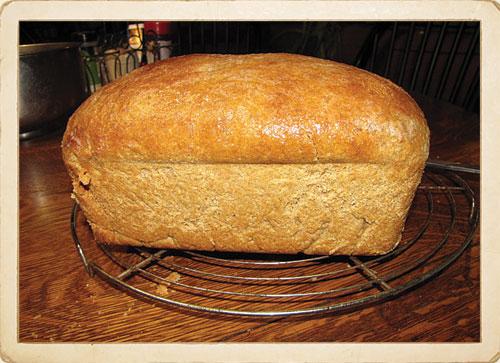
Location & shelter
Hopefully, your survival homestead is in a relatively isolated location far from any major highways or large cities. You’ll need room for a garden, a natural source of water, and the ability to harvest firewood.
In Montana, our homestead was located seven miles up an extremely rocky, eroded Forest Service trail, accessible by only a four-wheel drive in the summer, an ATV in the spring, and snowmobile in the winter. Once up the mountain, you still had to actually find our homestead, located through a dense patch of pines.
Here in Minnesota, our homestead is a mile and a half up a logging road from an infrequently-used highway. I use the term “highway” loosely; a dog could sleep on it undisturbed for most of the day. We are two hours away from a city or freeway.
For long-term hunkering down, you really need four solid walls and a room. A travel trailer or tent gets way too cramped for long-term living, and there’s not a lot of room for food storage.
Be sure your home is well insulated and has plenty of windows. In warm climates, you probably won’t have the capability to run air conditioning or even fans (which is when opening a window can come in handy). In cold climates, insulation added while times are good will reduce the amount of fuel you’ll need to keep you warm in the winter.
Windows will also let in natural light, reducing the fuel you’ll need to see during the days. We have south-facing floor-to-ceiling patio door windows to let in warm sunlight in the winter months.
Water
Most folks have a well with an electric pump or a community water system. Neither is going to work without electricity if the power is down.
Three of my homesteads have had gravity-fed springs piped into the house. These required no electricity in order to have water and water pressure (albeit minimal) to the house. Since then, I’ve discovered I could have had a driving shower by simply installing a 12-volt pump with battery and charger in the bathroom vanity base to increase the water pressure on demand. A 12-volt pump costs under $100.
On our current homestead, our well is 375 feet deep and water is supplied to our home by a 220-volt submersible pump. Unfortunately, to get water we have to run our generator. This fills up our 600 gallons of water storage tanks in the basement. Water pressure to our fixtures is provided by a 12-volt water pump and batteries, charged by our solar panels and wind charger. But this system still needed gas to run the generator.
So, my husband, Will, developed a shallow well with a homemade point, installing a 110-volt submersible pump which will run off our solar and wind capabilities. It provides water to the barn, but it can be switched to supply both the barn and house, if need be.
Having any source of water nearby is a bonus. Even a river, creek, lake, or pond is a huge asset. From these sources, you can get water to bathe, wash clothes, and water your livestock. And with treatment via a good water filter (such as a Berkey), you can use it for emergency drinking water. Even straining this water through a clean cloth, then boiling it will render it fit to drink if you must. One year, our water line froze, so we had to get through three months of winter using just melted snow and about 400 gallons of stored water in our basement tanks. This was not ideal, but it worked.
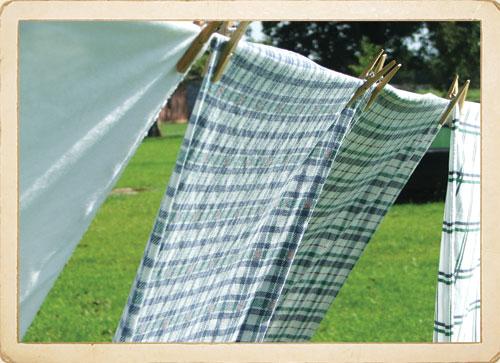
Washing clothes & bathing
A conventional washer and dryer will no longer be an option for most folks in a long-term survival situation. These appliances use way too much electricity and water.
I’ve used a wringer washer for the last 40 years. (Before that, I used a washboard.) A wringer washer will not only get your clothes cleaner than a conventional washer but will use about 40 gallons less water, too.
With a start-up from the generator, it will continue running on our inverter, powered by a battery bank charged by our wind charger and solar panels.
Although I currently have a propane dryer, I still have clotheslines.
Bathing or taking a shower is something folks don’t think about while considering a survival situation. When we lived in Montana, we alternated between using a solar shower hung on a tree in the summer to that same shower hung above our clawfoot bathtub in the winter. I’d heat the water in a canning kettle then we’d pour the deliciously hot water into the solar shower bag and hang it up. By working quickly, both of us could take a shower and wash our hair. My son, David, took his bath in a washtub in front of the wood cook stove.
When we first moved to Minnesota and were living in a travel trailer, we upgraded to a battery-operated shower. I heated the water in a canning kettle, but it only took one kettle to give a long, hot shower.
Now we have water pressure and a propane water heater. But, if need be, we could go back to “the old days.” Or, Will could install a homemade, wood-fired water heater (see page 61).
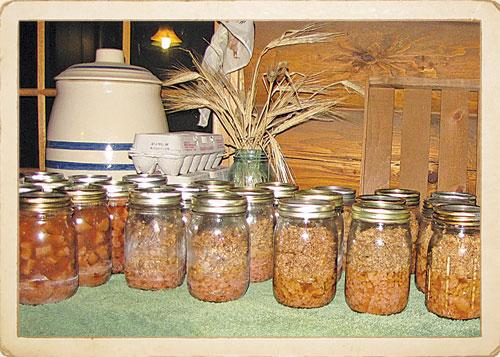
Storing up food
In Montana, we added a lean-to addition on the cabin, just for a homestead-type kitchen and a large, walk-in pantry. In this pantry, we built shelves from waist high to the ceiling for canned and dry food and used the lower area for bins of potatoes, rutabagas, carrots, and onions.
Unless you’ve ever been in the position where you can only eat what you have stored or are growing in the garden, your perspective on what you’ll eat in a long-term bug-out situation is likely unrealistic.
I’ve had many people tell me they’re all set with 100 pounds of flour, a bucket full of rice, and a bucket full of dry beans, along with some MREs (Meals Ready To Eat).
I found that in six months, three of us went through 300 pounds of flour, 20 pounds of cornmeal, 200 pounds of potatoes, 50 pounds of rice, 50 pounds of sugar, 40 pounds of dry beans, 20 pounds of dried milk, 10 pounds of popcorn, 20 pounds of rolled oats, not to mention hundreds of jars of home-canned foods, and an elk. This is not including spices, salt, dehydrated foods, nuts, eggs, cheese, baking powder, and yeast.
Remember, you’ll be baking a whole lot more than you usually do. I quickly discovered that when you’re shut in by weather or circumstances, you crave goodies. Meals of plain beans and rice quickly wear out.
I have several cans of dehydrated eggs, but I found that by gathering our chickens’ last fall eggs into cartons and storing them on the cold floor of our pantry, I could keep relatively fresh eggs for six months. In Montana, our hens did not lay in the winter, as we were off grid and could not keep a light on in their coop. We’re planning on building a new coop on our current Minnesota homestead, complete with a battery bank charged by additional solar panels which used to power our house. Then we’ll have fresh eggs all winter.
The first winter in Montana, I didn’t store enough butter and we ran out before the deep snow melted. Luckily, I did have dehydrated butter. I learned to add peanut oil to rehydrate it instead of water, as the taste was much better. Then I learned I could can butter, which works much better.
Margarine will keep longer without going rancid than will butter, when just kept cool. However, don’t use tub margarine as the first ingredient is water. This margarine will get moldy when you try to store it. Solid, stick margarine will store much longer in good condition.
Be sure to store up on cooking oil and fat. I can up plenty of lard from the pigs we butcher and also keep plenty of peanut, olive, and sunflower oil on hand in the pantry. When we lived out of our pantry for six or seven months, it was amazing how fast our cooking oils and shortening went down.
Nearly all of our meat and poultry was canned: chicken, turkey, venison, beef, and elk. We did have a frozen quarter of elk out in the woodshed, covered to keep chickadees and weasels from munching on it. When I wanted some for dinner, Bob would go out and saw off a roast or steak with a meat saw the morning before I planned on cooking it for dinner.
Now, we have an electric freezer powered by our wind charger and solar panels.
Remember that although plain unbleached flour will last for several years when stored in a dry, rodent/insect-proof container, whole wheat flour will only last for a few months at best before going rancid. So in addition to bags of unbleached flour, I always store up a couple hundred pounds of wheat. Not only can I grind this, using my hand-powered grain mill, but I can also plant it to increase our stored wheat in the future. And the beauty is, wheat will store for decades and still remain good.
The same goes for dry corn. Store-bought cornmeal has the germ removed, just like plain unbleached flour does. Thus, it will store for a long time. But whole, dry corn will store longer and you can grind your own cornmeal as you need it or you can plant the corn to increase your bounty and replace what you’ve already used. I keep 25 pounds of popcorn and 25 pounds of a heirloom corn, Seneca Round Nose, in the pantry for this reason. I also keep 10 pounds of masa harina (corn flour) on hand at all times.
I always have about 20 pounds of different cheeses in the freezer along with about 10 pounds in the refrigerator. I rotate the cheese to keep it fresh.
I also can up many pounds of cheese (see my book Growing and Canning Your Own Food for directions) and I keep a few #10 cans of dehydrated cheese blend powder on hand in both my kitchen and pantry.
I buy my baking powder in large, restaurant-sized cans. I remove about a cup to store in the kitchen, then freeze the rest. Frozen, it retains its leavening powers much longer than if left out at room temperature.
Likewise, I buy yeast in one-pound bags, taking about a cup out to keep in the fridge, then freezing the rest. Should things start looking dicey, I’d recommend buying another pound as I go through a pound in six months. You can always make sourdough starter and bake sourdough breads, but yeast is nice to have around, too.
I keep a pound of baking soda and several pounds of iodized salt in the pantry all the time. Baking soda keeps its leavening power when stored at room temperature. I also keep several pounds of pickling salt around for pickling, as regular salt can darken pickled foods.
When storing dry foods in your pantry, remember to protect against mice. I lost some of my dry foods when mice decided to come into the cabin for the winter. They chewed through the bottoms of a few of my gallon plastic jars. That’s why glass or tin storage jars are much better.
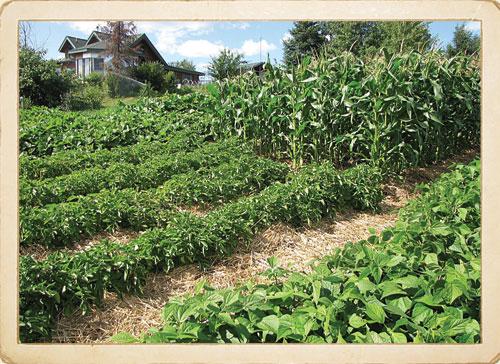
Gardening
No matter where your survival retreat is, you need to keep your garden ready at all times. This means keeping the weeds down, tilling in rotted manure every spring, and keeping the garden fenced with 6-foot-high fence to keep out the deer. If you have a lot of rabbits and other small, hungry critters, line the bottom two feet with 1-inch chicken wire. I’ve seen cottontails run right through 2×4-inch or larger fencing.
Keep your garden either in use or tilled up twice a year, spring and fall. You don’t know when you may need to plant it, and gasoline for your tiller will most likely be scarce. If your garden has been plowed/tilled in the fall, with rotted manure worked in, it’ll require little work in the spring to get it ready to plant. About a gallon of gas will till our one-acre main garden, if it has been worked up in the fall. If not, it will most likely take three times that amount of gas.
You’ll need to grow potatoes, carrots, corn, rutabagas, turnips, tomatoes, squash, beans (both snap beans and dry beans), cabbage, peppers, greens, and herbs, at the minimum.
Once the garden has been tilled and planted, it is an easy matter to mulch it deeply as the plants grow in size, so you’ll have to do no further tilling and very little weeding. Hand-weed the rows, then mulch them deeply with leaves, pine straw, straw, or non-seedy hay which has never been sprayed with chemicals.
Watering can be a problem if you need electricity to draw water from a well. Instead, think about using a 12-volt pump, powered by a deep-cycle battery, charged via a solar panel, to pull water from a nearby creek, river, or pond; building a simple hydraulic ram pump to bring water from a spring, creek, or river; or even carrying water in five gallon buckets, then watering row by row with a tin can with holes punched in the bottom. Been there, done that, but I wouldn’t recommend it.
On our Montana homestead, we were lucky and had a good, strong spring above our garden. We had running water right to the garden, although not enough pressure to use a sprinkler; we watered by hand-held hose.
Here in Minnesota, we water using a gasoline pump in our spring basin. During tough times, we can switch to using our new shallow well with its 110-volt pump and several garden hoses. Again, the pump will run off of our battery bank, charged with our solar array and wind charger.
As well as gardening, consider planting an orchard and other permanent crops while you can. Our little one-acre orchard is now six years old and is really starting to produce lots of fruit. In tough times, you’ll be so very glad you have your own fruit as well as berries, rhubarb, and asparagus.
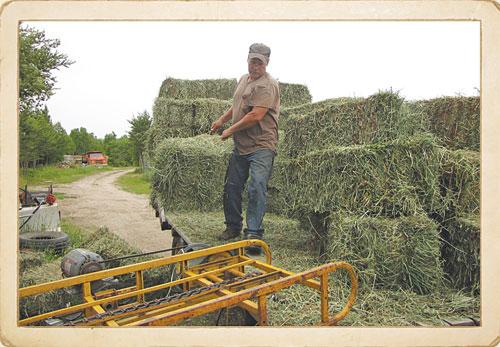
Livestock and pet food
Don’t forget your critters when preparing for long-term emergencies. Our Labradors have gone through 250 pounds of dry food in six months, along with table scraps and elk bones/innards which were frozen. Forget canned food; it’s too expensive for the nutrition provided, unless you plan on home-canning food for your pet. I knew of an old woman who, during the Great Depression, shot woodchucks out of her garden then canned them up for her beloved Fox Terrier to eat during the winter.
For your livestock, remember that good-quality hay kept in a dry place, such as a barn loft or hay shed, will keep for decades. It’s a good idea to keep a year’s worth of extra hay on hand, just in case. This is the reason Will and I try to make hay on all available hayfields, even if we have plenty.
Grain may be hard or impossible to get during an extended emergency. When building our new barn, Will planned for a cement-lined grain bin on the north end of our barn. Holding several tons, it’ll keep our critters in grain for quite some time, if fed sparingly. If necessary, we’ll reduce our livestock to a few goats, a team of horses, a milk cow, and bull.
When we lived in Montana, we kept two tons of “Packer Pellets” — a grain/hay pellet made for outfitters who packed hunters into remote mountains — right in our cabin, stacked along the north wall (insulation!). We also hauled hay in and stacked it in a covered pile on pallets to last the horses all year.
We also kept a small flock of chickens for eggs and some meat. We would have had more chickens, but we could only store ten 100-pound bags of feed over the winter in a tiny room on the end of the chicken coop.
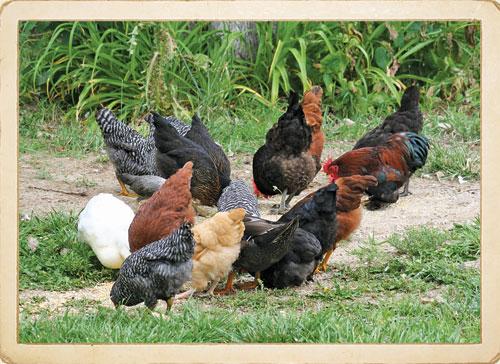
Firewood & fuels
As you know, firewood may be the only means of heating a home, should things go south. We try to keep two years’ worth of firewood in the wood shed every year. Dry, split firewood, kept inside, protected from dampness, will last indefinitely.
However, all that wood will eventually get burned up faster than usual because in an emergency you’ll be cooking with wood as well as heating. We have hand saws for cutting firewood and have used them a lot, but now that we’re getting older, cutting 10-15 cords of firewood every year by hand doesn’t sound pleasant. Recently, we found an answer that was pretty unusual. Our friend mentioned that her husband bought a cordless chainsaw and an electric chainsaw. We could use a cordless chainsaw to cut down dead trees in the woods and drag them home with the horses. Then, we could cut the trees into pieces with an electric chainsaw, powered by our battery bank while the cordless chainsaw’s battery recharged using the same battery bank … charged by our solar panels and wind charger. It’s one of our next priorities to buy both a cordless and an electric chainsaw.
We use our tractor-mounted hydraulic splitter for firewood, but we realize that at some point fuel might not be available. So it’d be back to using a splitting maul and wedges — a little tougher, but definitely doable.
It’s also good to have a supply of fuels on hand. When we lived in Montana, we bought 55 gallons of gasoline. We used this gas over winter to supply our minimally-used generator, the Coleman multi-fuel lantern, and occasionally the snowmobile. By being frugal, this gas also powered our tiller, come May, when the snow was still deep on the side-hills going down to “civilization.” While using a gasoline life-extender, such as Stabil, would have been best, we didn’t have any trouble using this stored gas.
We had a propane light in the kitchen/living room, a propane refrigerator, and a propane kitchen range that we only used in the summer. Fortunately, we had an excellent propane company with a four-wheel-drive delivery truck. In the summer, he’d come up and deliver 500 gallons of propane, which would last all year long.
Now, we have a 1000-gallon tank which gives us hot water, a propane kitchen range for use in the summer, a propane dryer, and two propane refrigerators. We use less than 500 gallons of propane a year.
It’s a really good idea to keep your fuel tanks full. Keep your gasoline as fresh as possible by rotating it through your vehicles to avoid gummed-up carburetors.
In an emergency, I’d get rid of the propane stove, water heater, and dryer in order to keep one refrigerator going as long as possible. After that, we’d have to use a spring box and have a whole lot less refrigerated food.
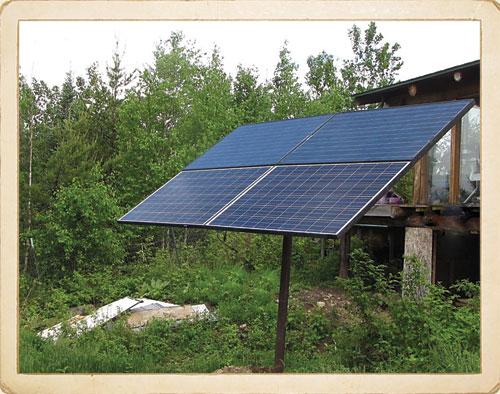
Lighting
You don’t think much about lighting in the summer. But in the fall and winter, when the days are shorter and the nights longer, you’ll need some light to keep from losing your sanity.
When we lived in Montana, we had several kerosene lamps and two Coleman lanterns. One was fueled by white gas or Coleman fuel and the other used both that and regular gasoline from the pumps. (Now, there’s a multi-fuel lantern available called BriteLyt, which shines brighter and burns more fuel types than Coleman lanterns.) We bought a 55-gallon drum of kerosene and dozens of gallon cans of Coleman fuel each fall to see us through the winter. But when both kerosene and Coleman fuel prices shot up, we switched to propane lanterns and fixed propane wall lights.
If you use any of these lamps, you will need to have some replacement parts on hand, such as globes and mantles. I have had moths fly into fragile mantles and shatter them. Once, a single drop of water dripping from a frosted nail in the ceiling cracked a glass Coleman globe.
For instances needing minimal lighting, we have used candles protected in a holder with a kerosene lamp chimney, set in the center of the table. This included bath time, story time, and times we just sat and listened to the radio. The candles helped save our fuel for better uses. I saved the leftover wax and remade the candles using new wicks. You can also make dipped candles from venison and beef fat. Be extremely careful when using candles, especially around young children and pets; many fires have been started by candles.
Now, with so many easy-to-use solar options, lighting with solar lights is very doable and will cut down on dependency on fuels. One easy option is to use outdoor solar yard lights. They can be charged outside during the day and brought indoors and set into stands in the evening. (See “Use solar landscape lights for emergencies” in Backwoods Home Magazine Issue #141, May/June 2013.)
Or you can use a smaller solar panel to charge a deep-cycle battery during the day and use that battery to power one or two LED lights at night.
Guns and ammunition
While not wanting to get into “the great gun debate,” I will say it is extremely important for a family to have at least a couple of guns available along with the proper ammunition. Family protection aside, guns will keep your family eating meat when you are hunkered down. Whether your game is rabbits taken with a .410, grouse with a 12-gauge, or an elk with a .30.06, a gun can keep your family in meat when there’s no store to buy it.
Our guns furnished us with deer, moose, and elk on a variety of our homesteads, all taken in season, with licenses. That meat filled our bellies and our pantries. To us, a gun is as much of a tool as a shovel or rake. All of our children were raised around guns with respect for them and for us. They never touched a gun without permission and an adult present. Those who wished to learn to use a gun soon were hunting and bringing in their own contributions to the family pantry.
Keep in mind that when times get tough, everyone will be out there hunting, which will quickly make game wary and scarce. Back in the homestead days, elk and deer were nearly exterminated in many areas, as families hunted these animals out of existence. It could happen again. So don’t depend solely on hunting to feed your family.
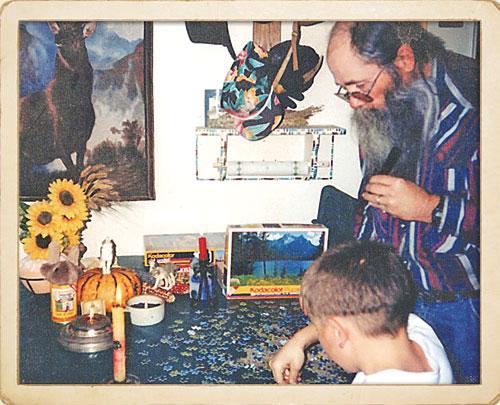
Entertainment
While many folks worry about getting “cabin fever,” which is severe depression due to being in one place over many weeks, we never found that the slightest problem. In the daytime, we were often outdoors, shoveling trails to the outhouse and around the wood pile, hauling more firewood, hiking on snowmobile tracks, feeding the birds, doing chores, and playing in the snow. During the day, I also did my baking, cooking, house cleaning, and washing.
In the evening, we’d sit around and tell stories, read books and magazines, and work on jigsaw puzzles. We also played a lot of UNO and board games. It pays to have some entertainment available at all times. Do you enjoy art or other creative hobbies? You might get a chance to oil paint, sketch, or do that beading you’ve always wanted to get at.
We have always had battery/solar/hand-cranked radios about the place, not only to provide quiet music, but to listen to impending weather reports and any news we feel is important.
Don’t forget about kids — put away some toys, coloring books, crayons, paints, and sketch pads. Although most kids today are tech savvy, if the grid goes down, they’ll still enjoy old-fashioned fun.
A lot more preparation is needed and I hope you are putting a lot of thought into that before it’s too late. Stage a couple of trial runs, shutting off the power for at least a weekend, to see how your family handles it.


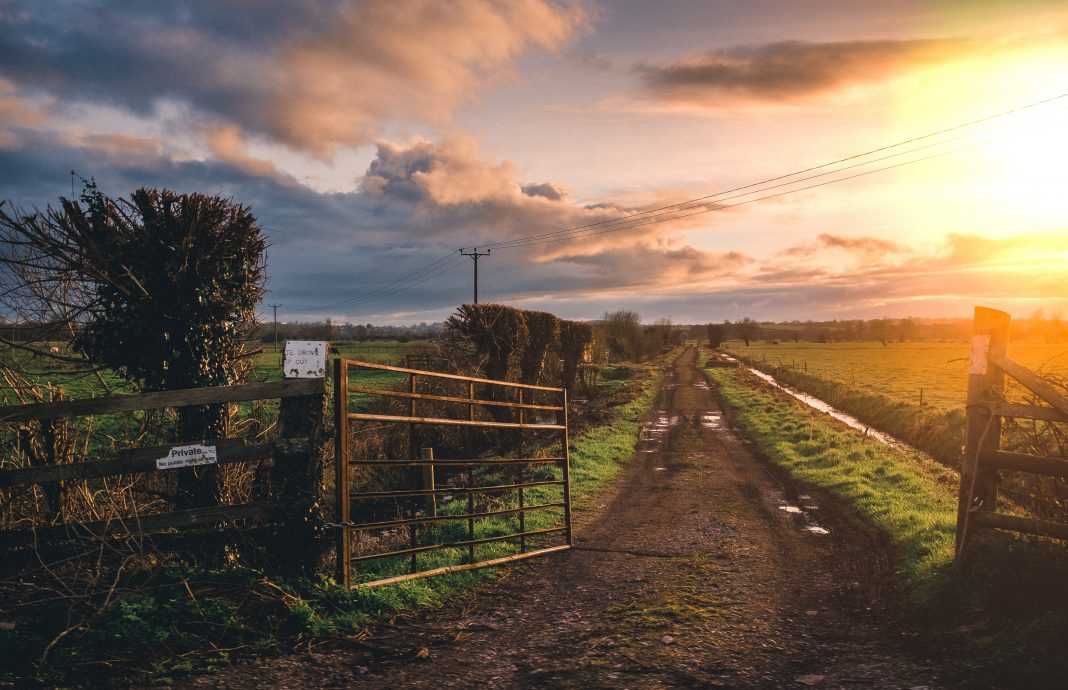







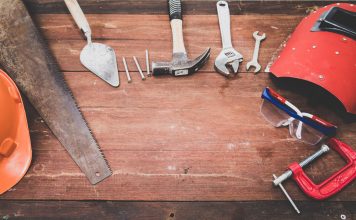
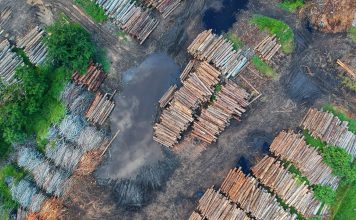


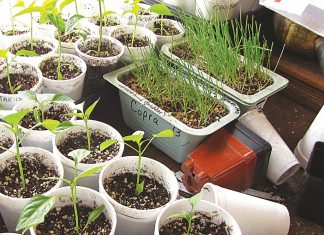
Great article, Jill, and backed by experience in true life! I have trouble with pantry moths from time to time. Do your large cans (I see the picture in your pantry book) for storage keep the moths out? We live off-grid, have orchards, gardens, and are visited by deer and bear for harvest; but, there’s so much more to do. Our next most needed project is to make our well water pump run by solar (presently a long ways from here and run on the local company electric). I’d say that firearms will also be essential when protecting you and yours, after watching a documentary about starving German people after Hitler took over. People rushed out of the cities to farms to steal, kill, and eat even raw meat, eggs, etc. An obscure home-place is preferred, but if not your place can be gated, camera-ed for observation and security, and completely outfitted with weapons. A conceal-carry weapon is essential during such times, preferably per individual on a daily basis, and I hear that we’re in for quite a time after the election: mayhem, and destruction. Very appripo article; thanks.
Incredible information for us city slickers that can see the future. Going to start canning meat, would love to buy your canning book!!
I unfortunately live in a townhouse, but I have a garden, herbs in pots, mushroom log and can deer meat that I take in the fall. I have a fire pit and stack firewood in the garage, I also have a propane grill for cooking , should emergencies arise. I am within a mile of state park & water source.l
Thank You for All The Input! Many do Not think of Alot of these situations! But, as I read it, I noticed U often spoke of Montana. ( Northern state)! Which is different than southern states! The temperatures get good awful hot down here. With that being said, It is much different situation & to store such foods in This kinda Heat. ( U can almost reshape metal in this beat)And, I’ve seen many other write on Northern kinda Living.
So, My Question is….. Would U Know of a Web-site, Post, blog, ect. That writes about HOW They Survive The awful southern Off-Grid situations/Living- tid bits???
What a great article. I live off grid with a 2,800 watt solar system. Rain water harvesting with 5,000 gallons storage for our water needs. Your article really gave us a lot to think about if we could no longer run to town for supplies.
Thank you.